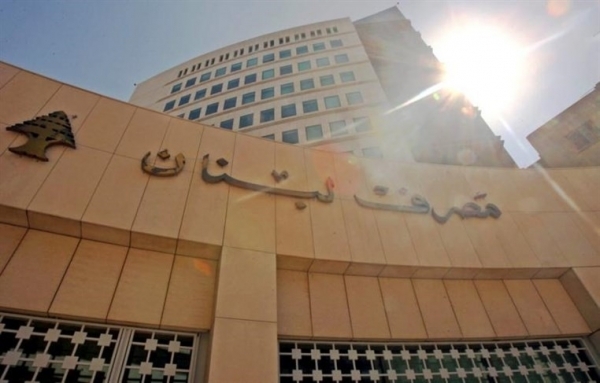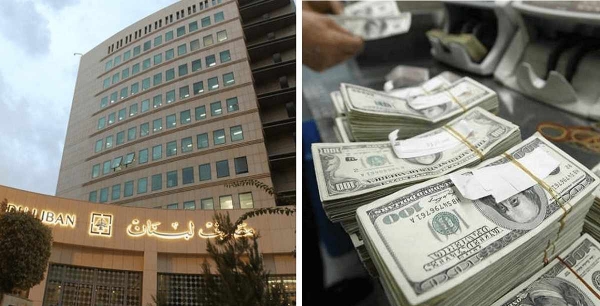Has the Banking Sector Started to Stumble?
Bank Deposits: Decreased Growth
The total deposits in Lebanon’s commercial banks reached LBP 192,443 billion (USD 127.6 billion) by the end of 2012 compared to LBP 177,438 billion (USD 118 billion) in 2011 and LBP 163,717 billion (USD 109 billion) in 2010, i.e. up by LBP 15,005 billion (USD 10 billion) and LBP 13,721 billion (USD 9 billion) amounting to 8.5% and 8.4% respectively.
However, the growth registered in 2010 stood at 13.4%.
The decrease in deposits in 2011 and 2012 was first of its kind over a four-year span as shown in Table 1.
|
Evolution of bank deposits (2000-2012) |
Table 1 |
||
|
End of the year |
Total deposits (LBP billion) |
Total deposits (USD billion) |
Annual growth in deposits (%) |
|
2000 |
56,729 |
37.6 |
10.9 |
|
2001 |
60,514 |
40.1 |
6.7 |
|
2002 |
64,274 |
42.6 |
6.2 |
|
2003 |
73,455 |
48.7 |
14.3 |
|
2004 |
82,690 |
54.8 |
12.5 |
|
2005 |
85,906 |
56.9 |
3.9 |
|
2006 |
91,494 |
60.7 |
6.5 |
|
2007 |
101,435 |
67.3 |
10.8 |
|
2008 |
117,252 |
77.8 |
15.6 |
|
2009 |
144,367 |
95.8 |
23.1 |
|
2010 |
163,717 |
109 |
13.4 |
|
2011 |
177,438 |
118 |
8.4 |
|
2012 |
192,443 |
127.7 |
8.5 |
Source: Monthly newsletter issued by the Association of Banks in Lebanon
Bank loans
The loans granted to the private sector reached around LBP 65,504 billion (USD 43.4 billion) by the end of 2012 compared to LBP 59.358 billion (USD 39.3 billion) in 2011 and LBP 52,656 billion (USD 34.9 billion) in 2010, i.e. up by LBP 6,146 billion and LBP 6.702 billion amounting to 10.3% and 12.7% respectively. However, the growth in loans registered in 2010 stood at 23.1%.
Table 2 shows the evolution of bank loans from 2006 until 2012 noting that the year 2012 recorded the lowest rate in loans.
|
Evolution of bank loans to the private sector (2006-2011) |
Table 2 |
|
|
Year |
Private sector loans (LBP billion) |
Growth rate (%) |
|
2006 |
25,652 |
- |
|
2007 |
30,791 |
20 |
|
2008 |
37,748 |
22.6 |
|
2009 |
42,774 |
13.3 |
|
2010 |
52,656 |
23.1 |
|
2011 |
59,358 |
12.7 |
|
2012 |
65,504 |
10.3 |
Source: Monthly newsletter issued by the Association of Banks in Lebanon
Banks’ Share of Public Debt
Lebanon’s gross public debt ended the year 2012 at LBP 86,959 billion (USD 57.7 billion) compared to LBP 80.887 billion (USD 53.6 billion) in 2011 and LBP 79.298 billion (USD 52.6 billion) in 2010. As is commonly known, the largest chunk of Lebanon’s public debt is acquired through treasury bonds both in Lebanese pounds and foreign currencies. Treasury bonds totaled LBP 82.124 billion (USD 54.5 billion) in 2012, which constitutes 94.4% of the public debt.
The share of the banking sector in treasury bonds stood at LBP 46.883 billion by the end of 2012 compared to LBP 43.950 billion in 2011 which translates into 57% and 58% respectively of the total bonds. In 2010, the banks’ share was LBP 44.115 billion, i.e. 59.7% of the total bonds. Table 3 shows the evolution of treasury bonds and the share of commercial banks.
|
Evolution of treasury bonds and bank shares in these bonds (2000-2012) |
Table 3 |
||||||||
|
Year |
Bonds (LBP billion) |
Bonds (USD million) |
Total (LBP billion) |
Share of banking sector in LBP treasury bonds |
Share of banking sector in FC treasury bonds |
Total share of banking sector in both LBP and FC treasury bonds |
Banks’ share in bonds in LBP (%) |
Banks’ share in bonds in FC (%) |
Total % of bank shares in bonds |
|
2000 |
25,731 |
5,218 |
33,597 |
17,589 |
3,769 |
23,270 |
68.3 |
72.2 |
69.2 |
|
2001 |
26,484 |
7,819 |
38,271 |
14,567 |
5,470 |
22,813 |
55 |
70 |
59.6 |
|
2002 |
24,548 |
12,779 |
43,812 |
16,700 |
6,838 |
27,008 |
68 |
53.5 |
61.6 |
|
2003 |
26,013 |
13,007 |
45,621 |
11,940 |
6,364 |
21,533 |
45.9 |
48.9 |
47.2 |
|
2004 |
25,766 |
15,709 |
49,448 |
12,111 |
8,791 |
25,363 |
47 |
55.9 |
51.3 |
|
2005 |
28,290 |
16,413 |
53,032 |
14,072 |
9,306 |
28,100 |
49.7 |
56.7 |
53 |
|
2006 |
29,158 |
17,540 |
55,600 |
16,429 |
10,673 |
32,518 |
56.3 |
60.8 |
58.4 |
|
2007 |
30,253 |
17,976 |
57,351 |
16,440 |
11,074 |
33,134 |
54.3 |
61.6 |
57.8 |
|
2008 |
37,644 |
17,789 |
64,461 |
23,781 |
10,354 |
39,389 |
63.1 |
58.2 |
61.1 |
|
2009 |
44,577 |
18,005 |
71,719 |
27,181 |
11,566 |
44,618 |
60.9 |
64.2 |
62.2 |
|
2010 |
47,237 |
17,737 |
73,975 |
26,489 |
11,692 |
44,192 |
56 |
65.9 |
59.7 |
|
2011 |
48,384 |
18,236 |
75,874 |
24,849 |
12,670 |
44,055 |
51.3 |
69.4 |
58 |
|
2012 |
49,334 |
21,751 |
82,124 |
27,107 |
13,081 |
46,930 |
55 |
60 |
57 |
Source: Monthly newsletter issued by the Association of Banks in Lebanon
Evolution of Banks’ Profits
The banking profits have been soaring over the past years reaching their highest in 2001 (58.7%) as shown in Table 4.
The 2011 profits decreased by 3.6% compared to 2010 and the average growth during the past four years stood at 17.6%.
|
Evolution of banks’ profits (2000-2012) |
Table 4 |
|
|
Year |
Banks’ profits (USD million) |
% of change |
|
2000 |
216 |
- |
|
2001 |
343 |
58.7 |
|
2002 |
312 |
-9 |
|
2003 |
396 |
26.9 |
|
2004 |
461 |
16.4 |
|
2005 |
519 |
12.6 |
|
2006 |
668 |
28.7 |
|
2007 |
850 |
27.2 |
|
2008 |
1,067 |
25.5 |
|
2009 |
1,426 |
33.6 |
|
2010 |
1,642 |
15.1 |
|
2011 |
1,582 |
-3.6 |
|
2012 |
1,620 |
2.4 |
Source: Monthly newsletter issued by the Association of Banks in Lebanon
The growth rate registered in deposits in 2012 equaled 8.5% noting that the average rate registered in the past four years was 15.1%.
Profit rates decreased by 2.4%, noting that the average profit rate over the past four years was 17.6%.
There was also a 10.3% decline in bank loans while the average growth rate amounted to 18% over the past four years.
All these indicators make one wonder about the status of the Lebanese banking sector and whether it has really started to stumble or not, and if so, what repercussions does this have on the financial and economic conditions in the next few years?








Leave A Comment